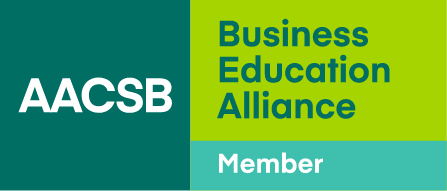Making Learning Immersive Through Extended Reality
- Through its XR Library and faculty-led design, INSEAD places students inside complex, high-stakes business scenarios.
- Virtual and mixed reality technologies go beyond traditional case studies by fostering emotional connection, critical thinking, and lasting learning outcomes.
- Business schools that join forces to co-create content and infrastructure can accelerate adoption of immersive learning globally.
Across industries, innovation has redefined how services are delivered and how value is created. Education has made notable progress, particularly in expanding access, online learning, and technology integration, yet much of its core pedagogy still reflects a model in which instructors deliver content and learners passively receive it. Evidence suggests that this approach, while still useful in some contexts, is less effective for cultivating deep, impactful learning.
Yet, the educational landscape is evolving. Tech giants like Google, Amazon, and others now offer microcredentials, and platforms like Coursera and LinkedIn Learning provide accessible, skills-focused alternatives
Employers are also adapting. A recent LinkedIn report notes that, in 2023, 26 percent of paid LinkedIn job posts didn’t require a degree, compared to 22 percent in 2020—a 16 percent increase. If business schools don’t evolve, they risk offering students an education that prepares them for yesterday rather than tomorrow.
The opportunity lies in embracing experiential learning powered by technologies like extended reality and artificial intelligence. By integrating these tools—without sacrificing academic rigor—business schools can reshape learning to be immersive, relevant, and future-ready. The introduction of AI into learning contexts offers not only high agency and interactivity but the potential for truly personalizing learning.
Breaking Down XR: AR, VR, and MRExtended reality (XR) is an umbrella term that encompasses a range of immersive technologies, including virtual reality (VR), augmented reality (AR), mixed reality (MR), and multiuser virtual environment (MUVE). These interfaces offer varying levels of interaction between the digital and physical worlds:
|
From Reading Cases to Living Them
In early 2019, INSEAD set off to redesign in-class experiential learning. Truly believing in the campus experience but also acknowledging its limitations, we aimed to bring the world into the classroom.
The first step was to reinvent the case study method. Instead of asking students to passively read a long case and imagine themselves in a very foreign situation, we decided to place our learners in the shoes of case protagonists—no longer theorizing situations but being immersed in them. We introduced complex, rich, realistic, and ambiguous scenarios and allowed participants to authentically tackle them in a safe and controlled manner.
Six years have passed, and the INSEAD XR Library features a wide array of immersive learning experiences designed specifically for business education. From crisis negotiations and ethical leadership to strategic innovation, entrepreneurship, and operations management, each scenario is rooted in real-world challenges and developed by faculty for their own, and their colleagues’, pedagogical requirements.
Students step directly into high-stakes scenarios and are asked to negotiate deals, manage conflict, and make tough decisions under pressure. For example, in one of the richest immersive experiences, students are randomly assigned to one of two conditions within an evolving mergers-and-acquisitions scenario. Students are assigned to either the acquirer’s or the target’s side and are asked to actively help drive the deal as well as prepare for the post-merger integration.
Learners are oblivious to the fact that the person sitting next to them represents the other side in this deal, and while the objective data are identical, the perspectives, interests, and dynamics are very different. Learners are asked to assess the deal’s potential through stakeholder interviews and make their personal recommendations in VR before they return to the group or plenary session to discuss the experience.
The facilitator receives real-time data on the learners’ choices, as well as their behavior in the scenarios. These data are used to drive discussions and generate insight in the class.
Harnessing Authentic Learning DataOne of the distinctive strengths of XR technologies lies in their ability to generate authentic learning data, both explicit (such as the decisions learners make) and implicit (including behavioral patterns and attention allocation). These data are analyzed through the lens of relevant theories and models, then unpacked during class sessions to spark meaningful discussion and reflection. Importantly, the data are collected at the cohort level, ensuring anonymity while still offering valuable pedagogical insights. |
Faculty as Facilitators of Deep Learning
INSEAD’s Immersive Learning Library is an extensive repository of curriculum-ready pedagogical assets that were designed and sponsored by academic faculty from INSEAD as well as from other business schools. Each title in the library represents a fully immersive, emotionally charged experience in which students feel the weight of their choices and see the consequences unfold in real time.
The development process of these immersive experiences always starts and ends with teaching faculty. The first question we ask is, what are the pedagogical objectives faculty would like to accomplish, followed by, why do traditional methods fall short in fulfilling them? We often work with two to three faculty members from different areas of expertise, which helps us create a very robust, realistic, and interdisciplinary case. It also ensures broader adoption.
Faculty members across the key disciplines of business and management education have reported a significant increase in student engagement, emotional resonance, and depth of understanding. These experiences help develop essential knowledge and capabilities much more effectively. When students are immersed in a narrative in which they play a key role and have a strong sense of presence, their cognitive and emotional responses are triggered.
Research shows us that people learn more effectively and feel greater self-efficacy when learning involves emotions and activates empathy. If a process requires active critical thinking and team collaboration, it leaves a deeper imprint among learners, and the learning outcomes become very salient. The impact is felt not only on learners but also on other stakeholders involved.
Benefits of Immersive Learning on Learners, Faculty, and InstitutionsLearners
Teaching Faculty
Institutions and Leadership
|
However, creating such learning experiences is just one component in the broader journey toward achieving scalable experiential learning. It also requires developing a learning methodology that in many ways disrupts and redefines traditional classroom methods. Professors must transform from teachers to facilitators—shifting from delivering knowledge to enabling insight generation through guidance and the strategic use of data.
This was the hardest feat. In an industry that’s seen few significant changes for centuries, we set out to offer something truly different while leveraging one of academia’s most powerful assets: a foundation built on rigorous, world-class research.
Fostering Experiential Learning: What Do Business Schools Need?
To support a trial, a research project, or a one-off pilot, a school needs very little—and in many cases, these initiatives never make it into the classroom. They remain confined to the lab.
In conversations with peer institutions, including some top-ranked schools, a familiar pattern emerges: these efforts often become passion projects for tech-enthusiastic faculty members, used primarily for research, or as VR and AI topics in their technology management courses.
At the other end of the spectrum, we’ve seen schools invest in content creation with multiple independent vendors, only to end up with unstable and underutilized assets. While content creates the value, that value remains unseen without the right technological platform to expand the content’s reach and impact.
For the process to work—from meeting learning needs to shelving device fleets—everything needs to be streamlined, easy, and cost-effective. Below are a few key functionalities schools should hone to ensure their efforts are both impactful and sustainable.
Key Resources for Learning Innovation
- Research-based content with concrete teaching objectives: Teaching stimuli should be both rigorous and playful at the same time. These should be proven assets that impact learning outcomes.
- Pedagogical support: Just like traditional learning methodologies, teaching faculty require an entire set of aids, such as playbooks, slide decks, references, session plans, and many others. For meaningful change to occur, professors need full support in adopting something new.
- User-friendly, easily managed technology: Improving learning is an endless investment, but adopting a new tool should be done with the expectation that its use will become habitual, scalable, and sustainable.
- Collaborative peer institutions: Just like in research projects, we inspire and motivate our peers to excel and grow. By working together to co-develop new learning opportunities, we strengthen synergies as well as contribute to the deeper calling of higher education institutions.
The Solution: Make It Simple, Make It Scalable
Talent, Trust, and Transformation: The Team Behind the Vision
A critical element in the success of this initiative was the team. Very early in the process, we understood that many capabilities required for this solution did not naturally sit within an academic institution. While we were able to assemble institutional talents that included media experts, learning professionals, and content creators—all orchestrated by the school’s teaching faculty—we wanted to ensure that INSEAD-XR had not only academic excellence but also business potential to grow and create an impact. Accordingly, a new entity had to be built.
AVRIS Technologies, a startup company in which INSEAD would hold equity and a shared vision, was incorporated. Led by veteran entrepreneurs, AVRIS launched a scalable, simple, and impactful learning solution driven by technology and academic excellence. Founding an external business entity with interconnecting relations within the academic institution might seem the opposite of simple. In practice, however, it proved to be key to sustainable success and growth.
Because an internal academic unit is tied to the overall objectives of the institution, it requires approvals and is subject to the standard academic bureaucracy and processes, which can slow innovation. An independent, for-profit company, on the other hand, is determined, is agile, and needs to prove itself every day in order to sustain its growth.
The relationship the business entity has with the academic institution includes many advantages, such as client base, immediate market access, and rigor, but also many challenges, like dependence on each other’s assets, procurement cycles, legal obligations, and politics. There is no magic trick to making this work in the long run. The success of the venture relies on trust, healthy communication, and respect for the assets each party brings to the equation.
To initiate and fulfill these achievements, we needed to exhibit true leadership and an entrepreneurial spirit. However, even with these qualities we would still fall short of our goals without a thriving community of creators, teachers, and industry partners working together and continuously evolve this solution.
Lessons Learned
Making mistakes is part of the innovator’s journey, as in all new ventures that struggle to bring a new solution to the market, and especially one as traditional as education. Venturing is about perseverance and patience as much as it is about vision and risk-taking.
When we just started out in early 2019, we were determined to quickly create content. While we achieved that, we learned the hard way that content without a means to deploy it and effectively use it in the classroom is like baking a cake without an oven. Other areas we neglected to fully consider were meaningful incentives for faculty to contribute to and adopt the technology and the ongoing maintenance aspect, such as the critical role of support staff, and the ongoing maintenance aspect, such as storage, shelving, and hygiene. All these and more were solved through mutual trust and leadership qualities within the school that enabled a certain amount of tolerance toward mistakes.
Making Immersive Learning SeamlessSimplicity is required not only in the institutional and architectural design of the solution but also in the classroom experience, where user interfaces and accessibility must function with precision and minimal effort. The result is a simple, user-friendly solution that allows key stakeholders to perform at their best while minimizing friction with technology. Business school faculty can now:
Schools and administrators are able to:
|
Why Collaboration Is Critical
The single most important insight from our journey is that no one can do it for you, but you can’t do it alone. Business schools have rarely collaborated at scale. But when it comes to integrating emerging technologies into our teaching, we must come together. If we don’t lead this transformation, someone else will, and business education as we know it might lose its relevance.
In the past 18 months, over two dozen schools have joined INSEAD’s immersive learning community, and this community is growing continuously. Partner schools are not only using the solution and leveraging INSEAD content, but they are also creating their own, developing methodologies, and evolving the existing offerings, enabling more context-specific interpretations.
As AI technologies continue to present ground-breaking opportunities across industries and academia, business schools in particular have a responsibility to prepare students to successfully gain an advantage in the future workforce. What might meaningful collaboration between business and academia look like in this context? How should we approach it, especially amid concerns that we may be competing for the same and increasingly limited audiences?
6 Ways Business Schools Can Collaborate to Advance Immersive Learning
- Co-Develop Premium XR and AI Content
Business schools can collaborate on building or licensing shared simulations and immersive experiences for core subjects, which are universal and broadly taught. XR development is costly, but shared investment lowers expenses and expands the content’s global relevance. Beyond XR, schools can co-create adaptive AI-powered cases and simulations that respond to student choices. Since AI grows and improves through data, co-use simulations, the body of knowledge grows and improves the efficacy of the AI tools. - Create Shared Innovation Labs and Tech Incubator
Establish joint labs focused on pedagogical innovation through emerging technology. These labs can serve as collaborative spaces for faculty, students, and startups to co-design prototypes that redefine business education. Shared R&D enables scale while keeping IP frameworks transparent and equitable. - Launch Cross-Institutional Courses and Learning Projects
Launch global capstone or action-learning projects where students from multiple institutions work together virtually in multinational teams using immersive collaboration tools (e.g., metaverse platforms, AI note-taking bots, virtual whiteboards). - Build Open-Access Repositories for Experiential Learning
Create a shared, open-access repository of experiential learning modules, 360° videos, AI prompts, and scenario engines, all tagged by topic and skill. This approach encourages crowd-sourced innovation and democratizes high-quality resources, especially for smaller or developing-market schools. - Support Faculty Training Through Fellowships and Joint Appointments in Edtech
Fund cross-institutional fellowships or joint appointments for faculty focused on the intersection of business pedagogy, AI, and immersive technology. This can accelerate innovation and create inter-school champions for collaboration. - Foster Peer Learning Networks
Schools and faculty members can use AI tools to connect students across institutions for peer-to-peer mentoring, discussion, and reflective journaling based on learning behaviors and career goals. These networks can support global exposure and self-directed learning, especially for students who may not have the opportunity to travel.
By focusing on collaboration and co-creation, schools can retain their unique brand positions while maintaining economies of scale, higher engagement, and pedagogical breakthroughs. Experiential technologies are transforming education—and the most agile institutions will be those that innovate together, rather than reinvent in silos.
The Right Innovators, the Right Time
We believe AACSB and other associations in our industry play a vital role in advancing immersive learning, not just by encouraging innovation but by actively bringing schools together to share what works, discuss the challenges, and offer potential solutions. We must:
- Establish joint standards for immersive learning: Accreditation might be challenging for some schools, certainly lower-resourced ones, but it comes with immense benefits. Accreditation drives us to achieve more, to measure our impact, and to foster healthy competition. If the industry is able to create a gold standard of scalable experiential learning solutions, then the resulting knowledge and capabilities would permeate business schools globally.
- Create shared infrastructure and libraries: Scalability depends on distribution platforms that provide the industry with relevant and usable resources. Content is a long-tailed economy—instructors need to sort through a plethora of titles to find the one that matches their unique style, teaching objectives, culture, language, and more. Therefore, we must expand the number of content creators while still ensuring that it meets the highest quality standards.
- Support cross-school pilots and experimentation: Just like schools encourage shared research projects and publications, so should they promote joint teaching methods and capabilities. INSEAD Immersive Learning shares its knowledge and powers with many schools, offering demos and pilots at direct costs, to ensure they can learn and make sound decisions before committing to a specific provider or solution. This requires trust and relationship-building—factors that require a lot of time and effort but pay off tenfold.
By joining forces, we can shape the future of management education—one immersive experience at a time.






